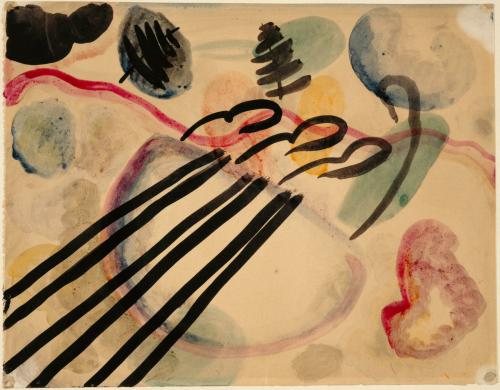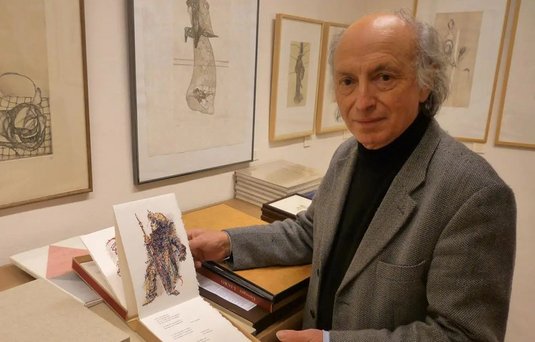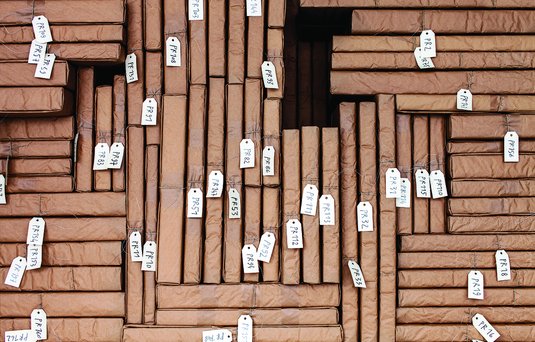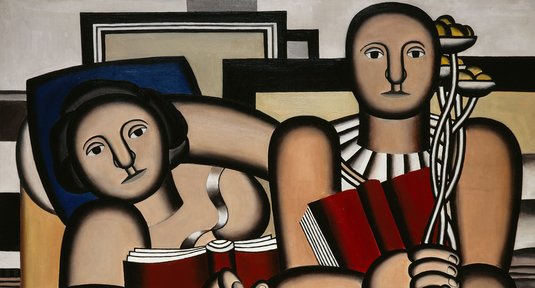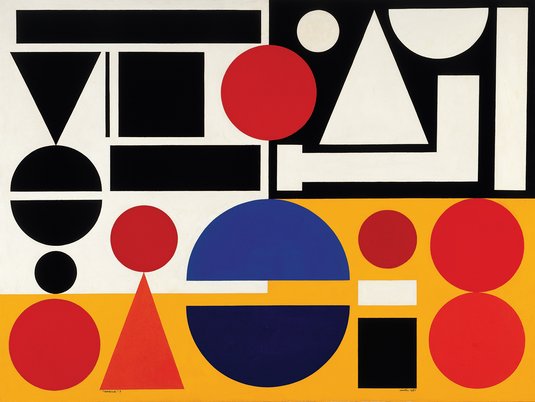Museum
Galleries of the 20th century
Second part
22 Oct 2020 - �1 Mar 2021

The event is over

Joan Miró, « La course de taureaux », 8 octobre 1945. © Successió Miró / Adagp, Paris. Photo © Centre Pompidou, MNAM-CCI/Philippe Migeat/Dist. RMN-GP
The Centre Pompidou continues its homage to the great dealers in modern and contemporary art active in France from 1905 to the end of the 1960s, with a second cycle of the "Galleries of the 20th century" hanging. Dedicated this year to nine new gallery owners, from Léonce Rosenberg to Claude Givaudan, this rich and eclectic overview extends over seven file-rooms and three crossways of the Museum.

Joan Miró, « La course de taureaux », 8 octobre 1945. © Successió Miró / Adagp, Paris. Photo © Centre Pompidou, MNAM-CCI/Philippe Migeat/Dist. RMN-GP
The activity of each of these galleries is evoked by an exhibition of works they presented.
These works, which now form part of the Centre Pompidou collections, were donated by these gallery owners or acquired by the Museum.
This new tour begins with a first file dedicated to gallery owner Léonce Rosenberg. In the period between the two world wars he succeeded Daniel-Henry Kahnweiler as defender of Cubism and his gallery, "L'Effort Moderne", also promoted abstraction. The tour continues with Pierre Loeb's gallery which, beginning in 1924, exhibited the greatest artists of the early 20th century present in Paris at the time, including the Surrealists. The number of galleries in the capital increased after the Second World War.
This presentation highlights several galleries which played an important role: the Studio Paul Facchetti, renowned for hosting the first solo European exhibition of Jackson Pollock in 1952, the Nina Dausset gallery, a friend of the Surrealists, and the Colette Allendy gallery which famously presented the very young Yves Klein. The Galerie Maeght, soon to become the leader, promoted Pierre Bonnard, Fernand Léger, Joan Miró and Alexander Calder who would go on to become great 20th century classics. Even more adventurous, the galleries of Rodolphe Stadler, Karl Flinker and Claude Givaudan appeared. Their archive collections, like that of the Studio Facchetti, have recently joined the Centre Pompidou collections. Manuscripts, invitation cards, opening night photographs and catalogues from the Bibliothèque Kandinsky collection are also presented in the showcases that punctuate the tour. The first cycle of the "Galleries of the 20th Century" hanging showcased other gallery owners from the same period, like Ambroise Vollard, Daniel-Henry Kahnweiler, Jeanne Bucher, Louis Carré, Denise René and Iris Clert.
In the past, museums devoted exhibitions episodically to certain great, historical gallery owners, but these essential players on the artistic scene had never benefited from such a spotlight from a national institution. First appearing in the late 19th century, gallery owners nevertheless quickly became indispensable intermediaries between artists and the public, like Paul Durand-Ruel, a pioneer and dealer in Impressionist art. From the beginning of the 20th century the role of the galleries was thus closely linked to the development of "living art". By promoting the reputation of artists in France, and abroad in the case of the more enterprising galleries, they quickly became the main instruments of artistic legitimization. In the history of 20th century art, they played an essential role in the development of the Fauvist and Cubist movements, the first abstract trends and Surrealism. After 1945 they also played a role in the development of gestural or geometric abstraction, as well as the Nouveau Réalisme.
Over time, the Musée National d'Art Moderne established a special relationship with certain galleries, as is abundantly evident from its collections.
When
11am - 8pm, every days except tuesdays
Where
Joan Mirò, La course de taureaux , 8 octobre 1945.
Successió Miró / Adagp, Paris. Photo © Centre Pompidou, MNAM-CCI/Philippe Migeat/Dist. RMN-GP

